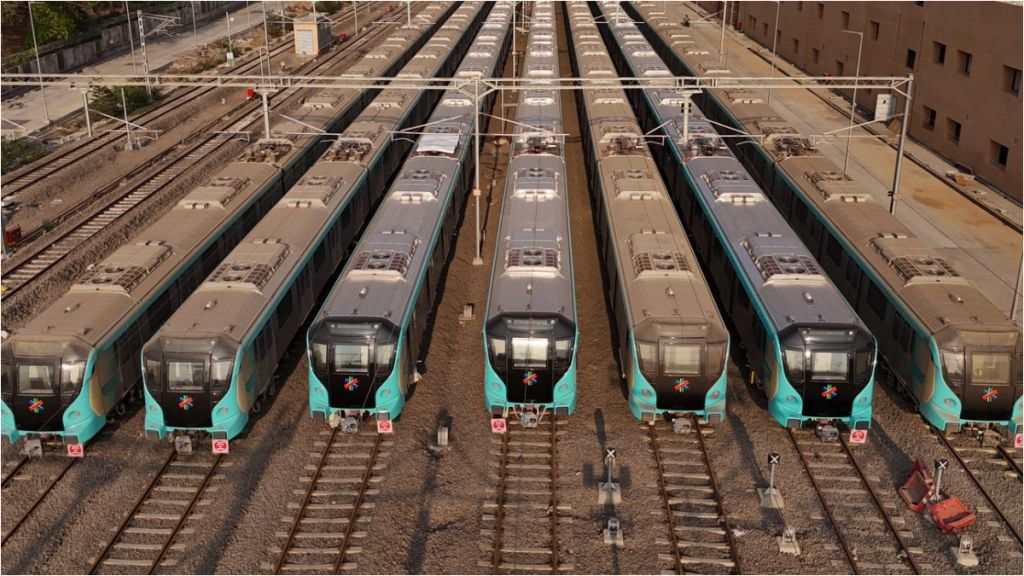
Mumbai: After all the fanfare surrounding a high-tech, modern Metro railway system, the travel experience on the Aqua Line section of Mumbai Metro Line 3, which officially opened to the public on Monday, is utterly miserable. Services might improve in the coming months, but the current situation is dire.
After several hours of travelling around, it’s clear that despite years of preparation, the Mumbai Metropolitan Region Development Authority (MMRDA) and the Metro Railway Corporation have failed to provide basic services—right outside their headquarters, no less. The situation is particularly bad around the BKC (Bandra Kurla Complex) Metro station.
Reaching or exiting the BKC Metro station can be life-threatening. It’s not just the Metro authorities; others also share the blame for this mess. After years of traffic chaos and the Metro's impact on the BEST bus network, this is the result.
This comes just four days after Prime Minister Modi inaugurated the Metro 3 link, connecting BKC with Aarey Colony and JVLR station. Taking a bus from Bandra station east to the Income Tax bus stop, you’ll find yourself facing the main carriageway on Bandra Kurla Road, teeming with heavy traffic. Crossing to the station is a hazardous ordeal—no traffic junction, no crossing signals, just the threat of serious injury or worse. A simple traffic signal could have been a game-changer.
The nightmare starts when you alight from the bus and try to walk a short distance to the station. The footpath is closed, forcing you to walk alongside fast-moving traffic. And when you reach the crossing point, there’s no signal; you’re left dodging vehicles in both directions. There’s no signage guiding you to the BKC station—only your phone (if you have one) can help, but even then, many find the Metro too expensive.
During two of my journeys, the trains were almost empty—mostly occupied by the well-off. The usual excitement seen during the opening days of the Andheri-Borivali stretch is missing, likely because accessing the new stations is a challenge in itself.
Outside the BKC station, there is no staff or signage to guide you. It's an exercise in frustration and confusion. After walking down countless steps, you might find a sign indicating that the lift is out of order, with another working elsewhere—but by then, it’s too late.
At T2 Metro station, there’s zero signage on how to reach the airport. Luckily, it’s within walking distance. Nearby, a foul-smelling nallah is filled with garbage, though a few egrets perched on a plant are a pleasant surprise amidst the mess.
The metro stations are dreary and sterile—lacking any colour, art, or images of the city—nothing to soften the cold, technological feel. This is in stark contrast to the Moscow Metro, which is renowned for its beauty. While Mumbai’s constraints are understandable, blaming the Aarey agitation for delays is unfair. Why are so many stations still unfinished, with escalators, lifts, and toilets out of service?
Exiting BKC Metro station is just as dangerous as entering it. There’s no safe path to the main road, nor any signage to guide you to the nearest bus stop. Despite all the talk about “last mile connectivity,” even basic amenities are missing.
On its first full day of operations, the entire Metro 3 line carried just 20,500 commuters. This is absurdly low; fewer than 25 BEST buses could manage that in a day. With eight carriages per train and multiple trips, the numbers remain disappointing. The Metro's claims of being energy-efficient fall flat—let’s see the data. For all the energy consumed, ridership is minimal.
The boast about “connecting the unconnected” rings hollow. It shows a lack of understanding of Mumbai’s transport history—BEST has been linking distant suburbs for decades. It’s clear the Metro wasn’t ready for this inauguration, which seems like a pre-election spectacle. Some glitches are understandable, but how can a brand-new Metro come to a halt for half an hour multiple times in just a few days?
Mumbai deserves better.